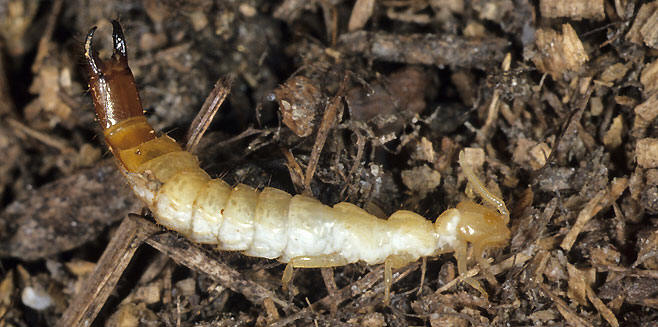|
Order: Diplura
Life
> Eukaryotes >
Opisthokonta >
Metazoa (animals) > Bilateria > Ecdysozoa
> Panarthropoda > Tritocerebra > Phylum:
Arthopoda > Mandibulata > Atelocerata >
Panhexapoda > Hexapoda
 |
|
Dipluran (family Japygidae), Koeberg Hill near
Cape Town. [photo H Robertson, Iziko ©] |
Diplurans are eyeless, wingless, elongate primitive-looking insects that are usually
found in moist places such as forest leaf litter and can range from about 0.5 cm to over 3
cm in length. There are two main families found in South Africa, the Japygidae and the
Campodeidae. The japygids are easily identified by the pincers at the end of the abdomen
(modified cerci). They might be confused with earwigs (order: Dermaptera) which also have
pincers but japygids are eyeless whereas earwigs have large, prominent compound eyes. In
campodeids, the cerci are not pincer-like and consist of many segments.
Diplurans are mainly predatory and those with pincers use them for capturing prey. Like
many other primitive wingless insects, diplurans have a form of external fertilisation in
which the male deposits a tiny packet of sperm, termed a spermatophore, raised slightly
above the ground by a short stalk. A receptive female comes across these sperm packets and
fertilizes herself. Eggs are laid in clumps among leaf litter or in little cracks. Female
japygids have been found to show a form of parental care by guarding their eggs and young
larvae.
Publications
-
Condé, B. & Pagés, J. 1991. Diplura. In: Insects of Australia 2nd
edition, Volume 1. Melbourne University Press, Melbourne, pp. 269-271.
|
